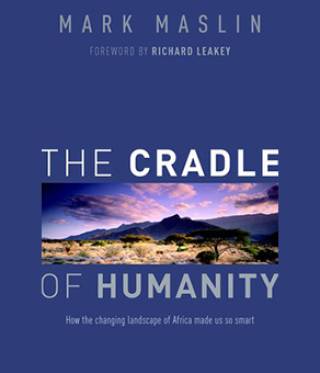Humans are rather weak when compared with many other animals. We are not particular fast and have no natural weapons. Yet Homo sapiens currently number nearly 7.5 billion and are set to rise to nearly 10 billion by the middle of this century. We have influenced almost every part of the Earth system and as a consequence are changing the global environmental and evolutionary trajectory of the Earth. So how did we become the worlds apex predator and take over the planet?
Fundamental to our success is our intelligence, not only individually but more importantly collectively. But why did evolution favour the brainy ape? Given the calorific cost of running our large brains, not to mention the difficulties posed for childbirth, this bizarre adaptation must have given our ancestors a considerable advantage. In this book Mark Maslin brings together the latest insights from hominin fossils and combines them with evidence of the changing landscape of the East African Rift Valley to show how all these factors led to selection pressures that favoured our ultrasocial brains. Astronomy, geology, climate, and landscape all had a part to play in making East Africa the cradle of humanity and allowing us to dominate the plane.
Buy from Oxford University Press
Reviews
This book offers far more than a palaeoanthropological cocktail with a twist ... In synthesising the most recent research in palaeoanthropology and giving the ecology of our ancestors a climatological twist, Maslin has produced a book that is fascinating, humbling and informative. (Adrian Barnett, New Scientist)
Understanding the emergence of our species from the unique landscapes of East Africa is one of the great scientific challenges. Mark Maslin takes us on an exhilarating intellectual journey, encompassing geology, astronomy, climate science and evolutionary biology, to argue that the unique landscape and ever-changing climate of the East African Rift Valley were instrumental in catalysing the emergence of civilisation on our planet. I'm left with a dizzying feeling of our good fortune to be here at all, and a powerful sense of our responsibility, as Maslin notes, to earn our species name: "Wise". (Professor Brian Cox OBE)
Anyone who reads The Cradle of Humanity will certainly be enlightened about this awe-inspiring journey. (Andrew Robinson, Current World Archaeology)
There is an amazing amount of information packed into this surprisingly slim book ... Maslin is able to quickly fill us in with the basic information on highly complex global processes we need to know, before continually returning us to the core theme of how this led to who we are today. Snazzy graphics – diagrams and graphs – helps break up the flow of information being directed our way, and aid smooth digestion. Maslin applies his own mind to existing theories and creates a hybridised narrative, one based on the mix of local, regional, continental and planetary changes which have affected East Africa over millions of years. He powerfully illustrates why nexus thinking of geography’s broad disciplines is so key to fully understanding such an immense subject as the evolution of humanity – the story of us. (Chris Fitch, Geographical Magazine)
In this tale of mountains, monsoons and meteorites, climate and ocean currents, Maslin masterfully puts human evolution into context and shows how the earth and its environments have shaped us. (Professor Alice Roberts anthropologist, author & broadcaster)
A powerful, gripping account of how the dynamic earth shaped human evolution… with impressive ease, Maslin packs a tremendous amount of knowledge into a flowing narrative, making the point that special conditions for a number of species of tropical apes on the African continent eventually turned out to be our luck...A tour de force through Earth’s history and a timely reminder of just how lucky we are to be here at all. (Professor Peter C. Kjærgaard, Director of the Natural History Museum of Denmark).
Palaeoclimatologist Mark Maslin delves into deep time to trace humanity’s rise to geological hegemony. Examining early hominin finds in East Africa, he spotlights three stages (bipedalism in Australophithecus, a jump in brain size in Homo erectus and Homo sapiens’ arrival some 195,000 years ago) and the roles of climate change, celestial mechanics and plate tectonics in their emergence. Ultimately, he theorizes that ‘climate pulses’ in the Rift Valley, in which hyper-arid conditions alternated with the formation of vast lakes, helped to drive the evolution of the big hominin brain. (Nature, Jan 2017)
As we confront rapid, major changes in the earth’s climate today, it is imperative we understand how past climate change made us who we are. This fast-paced book vividly tells the story of how and why shifting environments have been driving human evolution ever since our earliest beginnings in Africa, and why those changes matter. (Professor Daniel E Lieberman, Harvard University and author of Story of the Human Body: Evolution, Health and Disease)
 Close
Close


